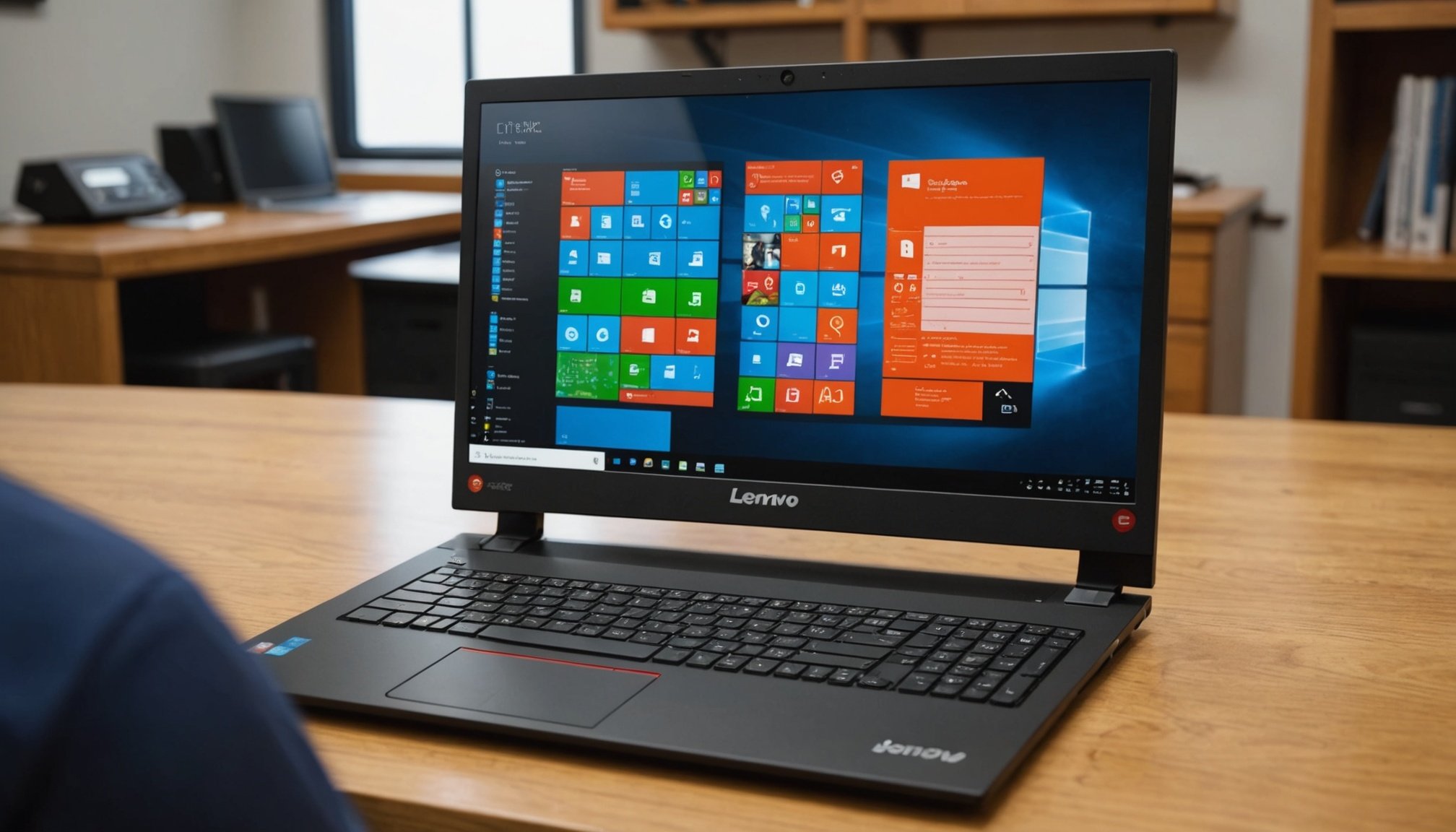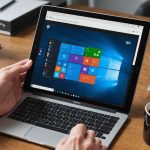Unlocking Security: Pro Tips for a Safe Remote Desktop Connection on Your Lenovo ThinkCentre M90n
In the era of remote work and cloud computing, ensuring the security of your remote desktop connections is more crucial than ever. If you’re using a Lenovo ThinkCentre M90n, you’re already on the right track with a powerful and secure device. Here’s how you can further enhance the security of your remote desktop connections.
Understanding Your Lenovo ThinkCentre M90n
Before we dive into the security tips, it’s essential to understand the capabilities and features of your Lenovo ThinkCentre M90n. This device is part of Lenovo’s ThinkCentre series, known for its high performance, small form factor, and robust security features.
Additional reading : Ultimate Remote Work Security: Setting Up with Ubiquiti UniFi Dream Machine
Key Specifications
- Processor: Up to Intel Core i7 processors, offering high performance and efficiency.
- Memory: Supports up to 64GB of DDR5 memory, ensuring smooth multitasking and data handling.
- Graphics: Options include integrated Intel graphics and discrete NVIDIA GeForce RTX graphics for demanding tasks.
- Security: Features a discrete TPM 2.0 chip, FIPS 140-2 certified, and various BIOS security options like administrator passwords and self-healing BIOS[4].
Securing Your Remote Desktop Connection
Securing your remote desktop connection involves several layers of protection, from the device itself to the network and software you use.
Use Strong Authentication
One of the first lines of defense is strong authentication. Here are some steps to ensure your remote desktop connection is securely authenticated:
Also read : How to Configure RAID 1 on Your QNAP TS-251D: An Ultimate Data Redundancy Tutorial
- Unique Credentials: Use unique usernames and passwords for each device and user. Avoid default credentials, which can be easily exploited by attackers[1].
- Multi-Factor Authentication (MFA): Enable MFA to add an extra layer of security. This could include biometric authentication, smart cards, or one-time passwords.
- Smart USB Protection: Utilize the smart USB protection feature on your Lenovo ThinkCentre M90n to allow only keyboard and mouse connections, blocking all storage devices[4].
Keep Your Software Up-to-Date
Regular updates are crucial for patching security vulnerabilities and ensuring you have the latest security features.
- Operating System Updates: Keep your Microsoft Windows operating system updated with the latest security patches.
- Firmware Updates: Regularly update the firmware of your Lenovo ThinkCentre M90n to address any known vulnerabilities.
- Antivirus Software: Use reputable antivirus software and keep it updated to protect against malware and other cyber threats.
Secure Network Connections
The network through which you connect is just as important as the device itself.
- VPN Usage: Use a Virtual Private Network (VPN) to encrypt your internet traffic and protect your data from interception.
- Firewall Configuration: Ensure your firewall is configured correctly to block unauthorized access to your network.
- Internet-Wide Scanning Protection: Avoid exposing your devices to the internet without proper security measures. Use tools like Shodan or Censys to identify and secure exposed devices[1].
Configuring BIOS and UEFI Settings
The BIOS and UEFI settings on your Lenovo ThinkCentre M90n offer several security features that can be configured for enhanced protection.
BIOS Security Features
Here are some key BIOS security features you should consider:
- Administrator Password: Set an administrator password to prevent unauthorized changes to the BIOS settings.
- Power-on Password: Require a password to power on the device, adding an extra layer of security.
- Boot Sequence Control: Control the boot sequence to ensure only authorized devices can boot the system.
- Self-Healing BIOS: Enable the self-healing BIOS feature to automatically recover from BIOS corruption or tampering[4].
Using Secure Communication Protocols
Secure communication protocols are essential for protecting data in transit.
USB and Ethernet Connections
- USB-C to Ethernet Adapter: Use a secure USB-C to Ethernet adapter, like the Lenovo USB-C to Ethernet Adapter, which supports PXE boot, Wake-On-LAN, and MAC pass-through, ensuring secure and reliable connections[3].
- Gigabit Ethernet: Utilize the built-in Gigabit Ethernet connection on your Lenovo ThinkCentre M90n for fast and secure wired connections.
Wireless Connections
- Wi-Fi 6 and Bluetooth 5.3: If you’re using wireless connections, ensure you’re using the latest Wi-Fi 6 and Bluetooth 5.3 protocols, which offer enhanced security features compared to older standards[4].
Practical Tips for Enhanced Security
Here are some practical tips to further enhance the security of your remote desktop connections:
Regular Audits and Monitoring
- Regularly Audit Devices: Regularly audit your devices and network connections to identify and address any security vulnerabilities.
- Monitor for Suspicious Activity: Use monitoring tools to detect and respond to suspicious activity on your network.
User Education
- Educate Users: Educate users on best practices for remote desktop connections, such as using strong passwords, avoiding public Wi-Fi for sensitive tasks, and keeping software updated.
Backup and Recovery
- Regular Backups: Ensure regular backups of critical data to prevent loss in case of a security breach.
- Recovery Plans: Have a recovery plan in place to quickly restore systems and data in the event of an attack.
Example Configuration and Comparison
Here is an example of how you might configure your Lenovo ThinkCentre M90n for a secure remote desktop connection:
Example Configuration
| Feature | Configuration |
|---|---|
| Processor | Intel Core i7-13700K |
| Memory | 64GB DDR5-5600 |
| Graphics | NVIDIA GeForce RTX 3060 |
| Security Chip | Discrete TPM 2.0, FIPS 140-2 certified |
| BIOS Security | Administrator password, power-on password, self-healing BIOS |
| Network Connection | Gigabit Ethernet or secure USB-C to Ethernet adapter |
| Operating System | Microsoft Windows 11 |
| Antivirus Software | Reputable antivirus software with regular updates |
| Firewall Configuration | Configured to block unauthorized access |
| VPN | Enabled for encrypted internet traffic |
Comparison with Other Devices
Here’s a comparison with another device to highlight the security features of the Lenovo ThinkCentre M90n:
| Feature | Lenovo ThinkCentre M90n | Competitor Device |
|---|---|---|
| Processor | Intel Core i7-13700K | AMD Ryzen 9 7950X |
| Memory | 64GB DDR5-5600 | 64GB DDR5-5200 |
| Graphics | NVIDIA GeForce RTX 3060 | AMD Radeon RX 7900 XTX |
| Security Chip | Discrete TPM 2.0, FIPS 140-2 certified | Integrated TPM 2.0 |
| BIOS Security | Administrator password, power-on password, self-healing BIOS | Limited BIOS security features |
| Network Connection | Gigabit Ethernet or secure USB-C to Ethernet adapter | Only Gigabit Ethernet |
| Operating System | Microsoft Windows 11 | Microsoft Windows 11 |
| Antivirus Software | Reputable antivirus software with regular updates | Basic antivirus software |
| Firewall Configuration | Configured to block unauthorized access | Default firewall settings |
| VPN | Enabled for encrypted internet traffic | Optional VPN |
Quotes and Insights from Experts
Here are some insights from security experts that highlight the importance of these measures:
-
“The security of IoT devices, including those used for remote desktop connections, is a critical concern. Ensuring that devices are updated regularly and that strong authentication measures are in place can significantly reduce the risk of cyberattacks,” says Matt Brown, a security expert[1].
-
“Using a VPN and keeping your operating system and software updated are fundamental steps in securing your remote desktop connections. These measures can protect your data from interception and unauthorized access,” advises a cybersecurity specialist.
Securing your remote desktop connection on a Lenovo ThinkCentre M90n involves a multi-faceted approach that includes strong authentication, regular software updates, secure network connections, and configured BIOS and UEFI settings. By following these pro tips and staying informed about the latest security best practices, you can ensure a safe and secure remote work environment.
As we step into the new year, prioritizing cybersecurity is more important than ever. Whether you’re using your Lenovo ThinkCentre M90n for cloud computing, graphics-intensive tasks, or simple remote desktop connections, these security measures will help you navigate the digital landscape with confidence.
In the words of a Lenovo spokesperson, “At Lenovo, we understand the importance of security in today’s digital age. Our ThinkCentre series is designed with robust security features to help users protect their data and ensure a secure working environment.” By leveraging these features and following best practices, you can unlock a safer and more secure remote desktop experience.











